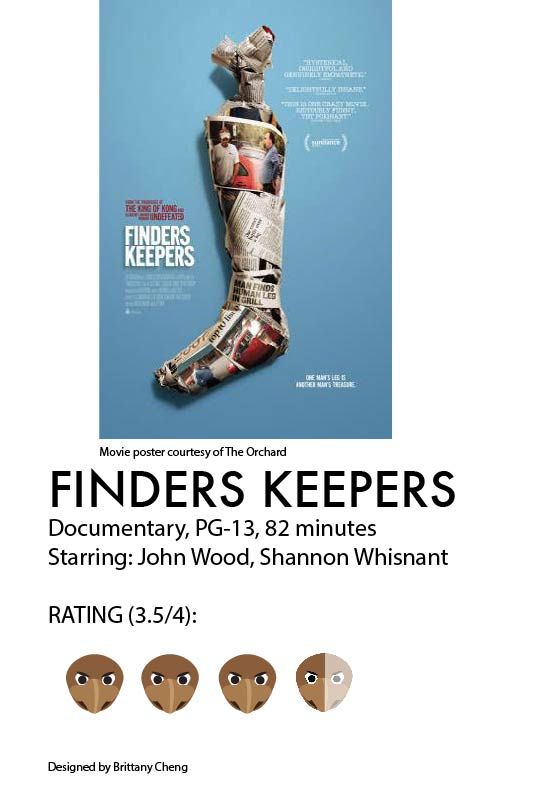
Finders Keepers
When Shannon Whisnant bought an abandoned storage locker, he got a grill. He also got the human leg inside the grill. Horrified, he called the police. And that’s as sane as Finders Keepers gets.
It’d be difficult to find a story better suited for a documentary. At times, it’s hard to believe the cast isn’t made up of imaginary characters, but the rural North Carolina incident that began in 2004 is just too weird to be fiction.
Whisnant might have been surprised at first, but when the police confiscate the leg, he becomes angry. He bought the locker and all its contents, including the shriveled foot. He sees it as his big break. He’s planning to charge admission to see the foot, but in the meantime, he’s selling tickets to see the empty barbecue smoker.
Across town, John Wood hears about the leg and decides he wants it, too. Mainly because it’s his. He lost the leg after an airplane crash that killed his father and was saving it to make a memorial to his dad one day. He asked the hospital to give him the skeletal remains, but instead was handed a trash bag with skin, toenails and all.
The leg makes for a great centerpiece. How do two separate lives become unbreakably intertwined over a single man’s body part? But the documentary captivates for another reason: Both men’s backstories explain why the conflict overtakes their lives. Whisnant always wanted the attention of his abusive father. He sees the leg as his chance to get the recognition and fame he’s always sought. As a child, Wood was spoiled by his wealthy family, but after he was sent home from the hospital with no leg and a nice helping of oxycodone, he became an addict.
Finders Keepers first promises a bizarre tale and one that’s excellently delivered. But the tone soon changes from the lighthearted amusement of the audience and cast to the struggles of two families that have suffered and lost. Told between home videos, it’s easy to see how wealth, poverty and broken families have shaped the lives of both men and left them vulnerable. Their mothers have become calloused as their sisters and wives are slowly drained by the fight to get back what both believe is theirs.
Naturally, the story catches some attention. Whisnant sues Wood for his own foot and the media eats it up, never aware that Wood is in the throes of addiction and is about to be kicked out by his mother.
For the first half of the film, we never see the foot. It hangs as a big reveal, but the filmmakers choose to let the excitement on screen heighten curiosity instead of playing the audience for the suspense. When we finally see it, the purplish, beef-jerky-looking appendage is resting on Wood’s lap at a German talk show. It’s apparent that he’s drugged out, and the gratification of seeing the leg feels cheapened.
TV Judge Greg Mathis finally ends the upheaval over the leg in a way that, oddly enough, leaves both men glad it happened.
Perhaps Finders Keepers’ greatest achievement is to dig beyond the story’s amusing facade and into the pain of everyday people in a way that doesn’t humiliate or victimize anyone. It might be easy to paint Whisnant as creepy guy out to make a profit on another’s great loss, but the film suggests he’s using the leg to heal his own pain. Wood might be the amputee, but the film gently explores the other ways in which he’s damaged. Finders Keepers promises to entertain, but its insight into emotional trauma and healing is perhaps far more valuable.
Click on the question below to vote:



